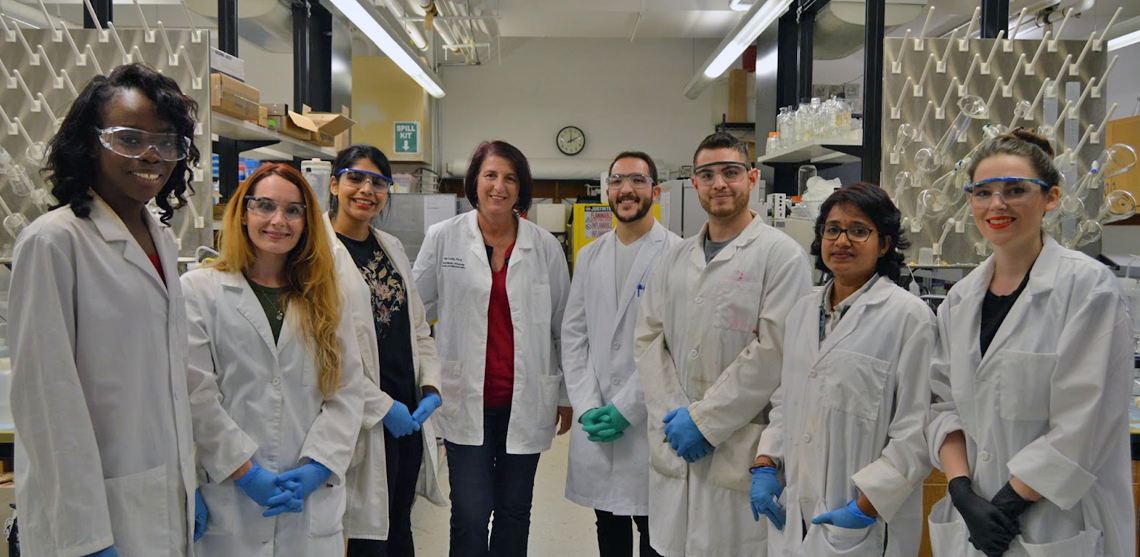
October, 2022
The annual Nobel Prizes that were recently announced are largely considered the most prestigious honor in the world. While it is awarded to “those who, during the preceding year, shall have conferred the greatest benefit on mankind,” it also most certainly highlights the impactful research taking place in those given fields.
This year, Stanford professor Carolyn Bertozzi was awarded the Nobel Prize in chemistry for her development of click chemistry and bioorthogonal chemistry, which allow scientists to explore cells and track biological processes without disrupting the normal chemistry of the cell. Her work builds upon that of two scientists who pioneered the field of click chemistry, K. Barry Sharples, Ph.D., (Scripps Research, California) and Morten Meldal, Ph.D., (University of Copenhagen) in the early 2000s.
“Since then, the growing number of applications of click chemistry are found in nearly all areas of modern chemistry from drug discovery to materials science,” explained Mare Cudic, Ph.D., director, Honors in Chemistry Program, and associate professor, FAU Department of Chemistry and Biochemistry. “The Nobel Prize recognition highlights the importance of the field of click chemistry in pharmaceutical drug discovery and many areas of chemical biology.”
Cudic got to know Bertozzi through her former postdoctoral advisor, Laszlo Otvos, at the Wistar Institute in Philadelphia, where Cudic had the pleasure of meeting and listening to her talks at several peptide and glycobiology conferences. At that time, both groups were working on the synthesis of the long 9 kDa glycosylated antimicrobial peptide.
“Carolyn Bertozzi is only the eighth woman to win this prize. Her work has energized the field of chemical glycobiology and inspired many, including myself, to join the field,” said Cudic. “She is a leader in the field of chemical biology — the field my research is focused on, too.”
At FAU, Cudic’s lab researches the design and synthesis of novel tools to study the role of glycosylation in human disease such as cancer and Alzheimer’s disease. In cancer research, they use a range of bioanalytical and biophysical techniques to probe the glycan-protein interactions that are involved in cancer progression and metastasis in order to aid the design and development of novel chemotherapeutic agents, cancer vaccines and drug delivery systems. In Alzheimer’s disease, they are studying the role of glycosylation on the balance between production and clearance of Amyloid beta (Aβ) peptides.
Gregg Fields, Ph.D., executive director of FAU’s Institute for Human Health and Disease Intervention (I-HEALTH) and a professor in the Department of Chemistry and Biochemistry in the Charles E. Schmidt College of Science, uses chemistry to answer biological questions, many of which assist in the diagnosis and treatment of major diseases.
His laboratory has used click chemistry in their projects, but the method they employ follows the other two Nobel laureates in chemistry, Drs. Meldal and Sharpless.
“Our research is focused on understanding the roles of proteolytic enzymes in disease progression,” said Fields. “Click chemistry has allowed us to construct heterotrimeric peptides that can be used as selective inhibitors of proteolytic enzymes implicated in diseases such as cancer, arthritis, and neurodegenerative diseases.”
Lab members create chemical probes that allow them to target specific enzymes and determine the role(s) of these enzymes in disease. Several of the probes they have designed have been patented, licensed and/or are commercially available for use in analyzing disease status or modulating disease states.
To learn more about the 2022 Nobel Prize laureates, visit www.nobelprize.org.